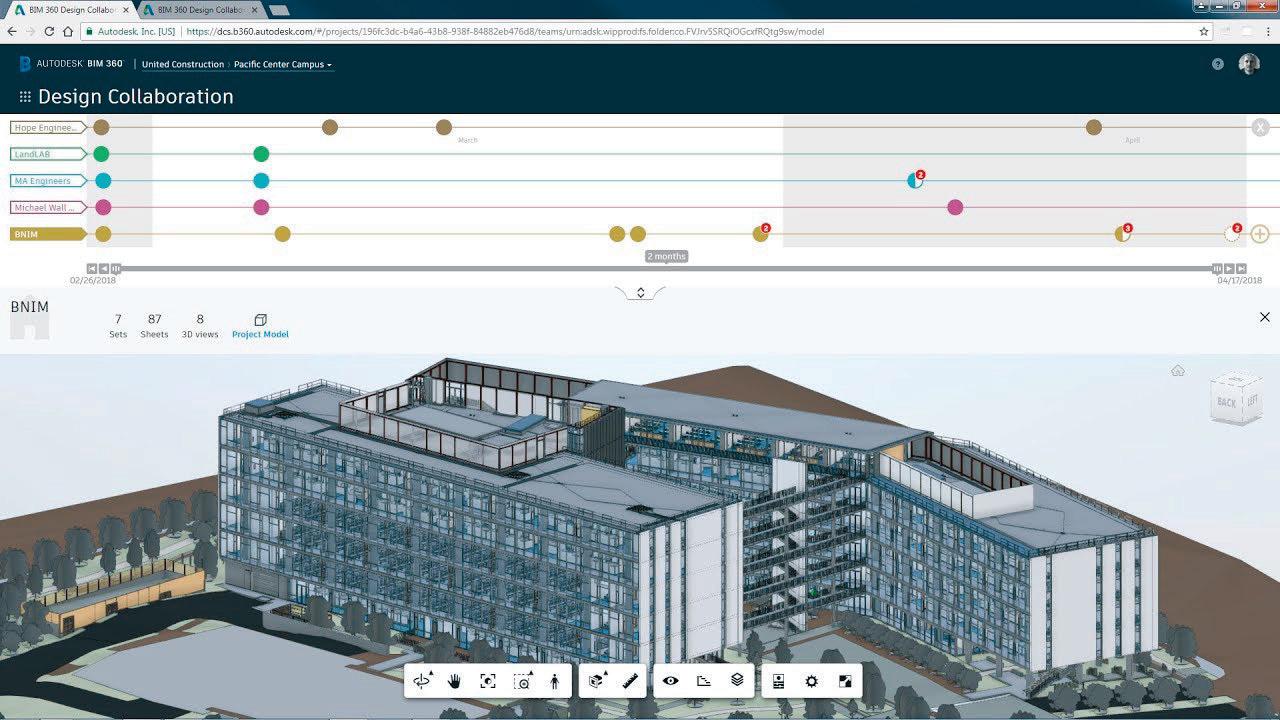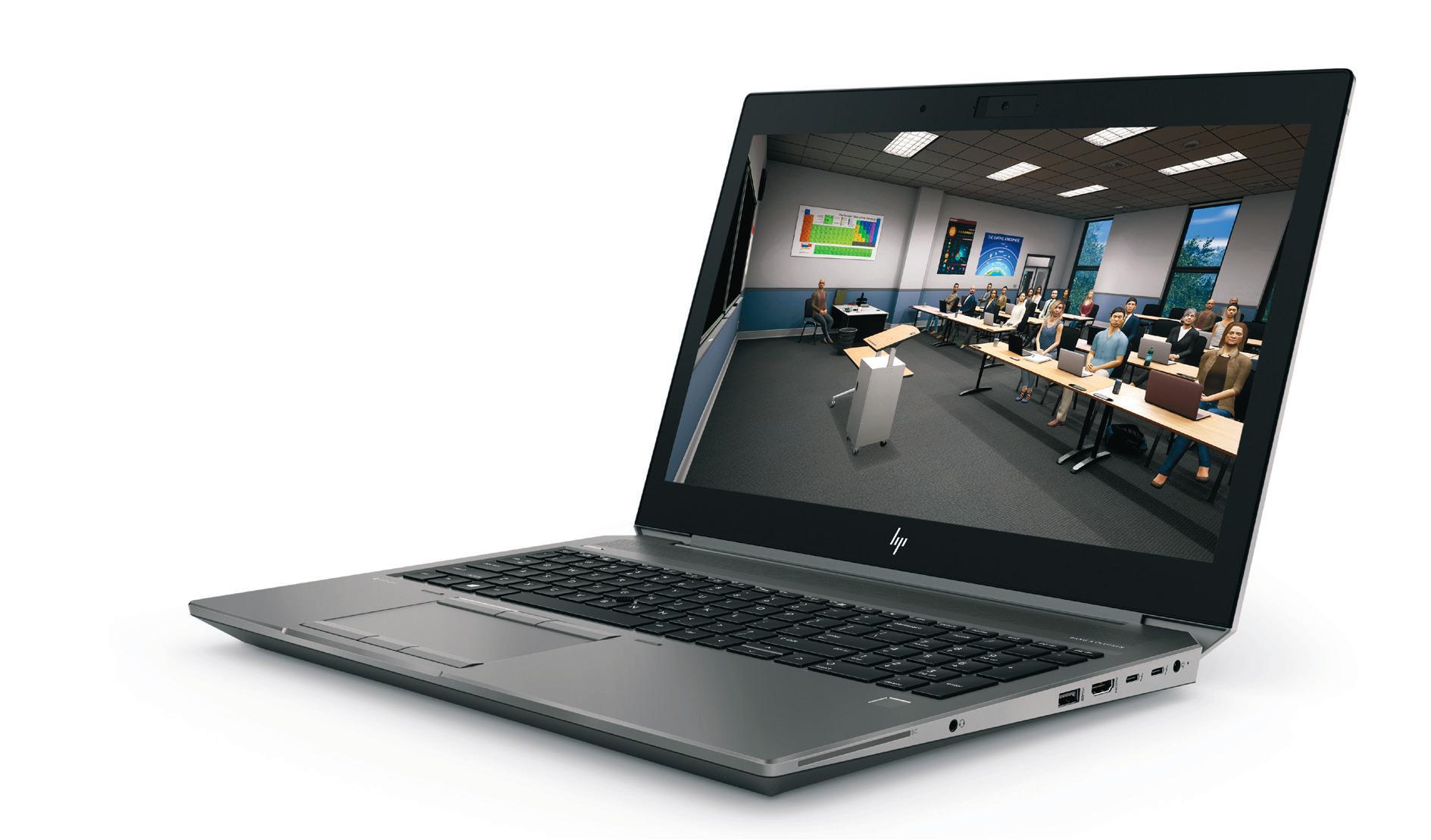
7 minute read
Excitech on homeworking
Excitech on lockdown
To continue our Covid-19 coverage, we talked with UK technology solutions and services provider, Excitech about its experiences with customers, technology providers and getting firms up and running, away from their offices
In our cover story this month [see tion, collaborating on data stored on a The right protocols page 12] we spoke with several AEC server on the local area network. When Remoting in using TeamViewer and firms to find out how the industry firms learnt that they would need to Splashtop worked to a degree, but it’s not responded to the Covid-19 lockdown. send staff home, most started looking at 100%, says Stone. “Applications like For a different perspective, we got in touch VPN, or remote desktop technologies Enscape require different protocols - with Excitech to find out how the UK VAR like Splashtop. OpenGL, for example - so we’ve had to and AEC industry consultant responded “I would say 90% of our customers are then look at different methods of conto the pandemic, how its customers adapt- doing that today,” says Stone. “Now, that necting. Where they might have had VPN ed to home working and how they are now had some challenges because some users and RDP to begin with, they now maybe planning for the future. didn’t even have a laptop or workstation using VPN and HP RGS (Remote
“For practices that are in the region at home. We then had a mad rush on Graphics Software) because it will supbetween 20 and 40 users, where they typ- orders for laptop devices. port OpenGL.” ically don’t have an IT manager, we are we “Typically, firms were buying the loware their IT manager,” explains Alan end workstations, just something to act New ways of working Stone, who heads up Excitech’s IT solu- as a dumb terminal to connect to their The sudden and very dramatic changes tions business. “When it started to look machine in the office, but everyone was that firms had to make meant customers like something was going to happen, we buying laptops at that period, so you questioned most aspects of their IT setup. realised we had to change our response. imagine in distribution the stock levels Do they move to workstation class lapSo our first test was actually to initiate our own business continuity ‘‘ [Clients] are re-evaluating how they work moving tops? Do they only use hosted data services? Do they still need such plan to remotely support our customers. “We did this two forward, with a focus on allowing their staff to split their time between office and working from home big offices? How can they be more dynamic both now and in the weeks prior to the lock- Martyn Stoneham, Excitech future? down. Our support staff are based in Enfield [London] and suddenly we had to take were hard to gauge. One minute laptops ’’ “We are starting to see that whilst customers had hobbled together various soluthat team and enable them to work were in stock, gone the next! It was a real tions to help them keep working in the remotely. Shortly after, we then started to challenge for procurement in general.” short term e.g. using Dropbox, Teams get calls from customers asking for help. But it wasn’t just hardware that was etc., they are now realising they need
“I’ve never known a couple of weeks the problem. Getting VPN licences gen- long-term solutions,” says Paul James, like it, we had more than triple the num- erated was also a challenge, as Stone Excitech’s head of document manageber of calls. I’ve got a team of ten engi- explains. “While all clients had a fire- ment solutions. “Digital workflows are no neers, everyone had to work full time on wall device, they only probably ever had longer a nice to have. You can’t print off the help desk and all leave was can- two or three users connected simultane- documents and walk them round desks celled. Our customers were relying on ously. Now suddenly we’ve got 20, so anymore, they need more permanent us. It went from mid-March into April VPN licences became critical. But the solutions in place.” and we went from typical IT issues to vendors were struggling with demand, According to Stone, dozens of custommoving them into a completely different so even just a generation of a licence ers have utilised the free extended access way of working.” within 24 hours became problematic programme for cloud-based collaboradue to the sheer volume, sometime tak- tion tool Autodesk BIM 360. However, Physical attraction ing 48 or 72 hours. It wasn’t just archi- some firms still don’t want their data Many of Excitech’s customers work in tects looking for this, it was the whole IT hosted on a public service and the experian office in front of a physical worksta- industry.” ence has been heavily dependent on how
1 Dozens of Excitech clients have utilised the free extended access programme for Autodesk BIM 360 2 Clients accessing BIM 360 directly from their mobile workstations at home have had the best experience. Credit: HP ZBook 15
the service has been accessed.
“50% accessed it through their office CAD workstation and 50% directly from a mobile CAD workstation,” says Stone. “Suddenly, those users accessing BIM 360 directly from their mobile device had a better experience than the ones who used VPN to access their office machine at work and then into the cloud.”
This has led to some firms investing in mobile workstations to use alongside BIM 360. It gives the flexibility of being able to access the model at home, or to take the workstation into the office. However, there is a cost element to consider. Many practices have already made significant investment in desktop workstations, so replacing these with mobile workstations will be expensive.
The same is true for cloud workstations, as Stone explains. “Once we start crunching numbers for desktop as a service (i.e. hosted virtual desktops) you can go and buy a high-end mobile workstation for a similar cost of a year’s service. Firms need to have those discussions internally, and weigh up the benefits vs cost of each approach.
“While we have remote desktop suppliers that can get you ‘desktop as a service’ in two hours, you can’t, because there’s still this one crucial problem, the model, where do customers put their data?”
Virtual Desktop Infrastructure (VDI) is another option, but while big architectural firms might already have had an agile working policy in place with pools of VDI desktops, for smaller practices it’s a major investment.
“VDI solutions are initially very investment heavy but the return is over a longer period,” says Stone. “Initial capital cost to deploy is very, very expensive.”
“Our advice is, whatever is right for your business,” he adds. The future office Uncertainly over future working environments is having a huge impact on technology decisions.
“Firms are not all going to be able to just go back to an office,” says Stone. “Firms don’t have the office space to implement a two-metre social distancing rule. It looks like firms might have to have half the staff in one day, the other half the other day.
“Speaking with our clients, what has surprised me is all are re-evaluating how they work moving forward, with a focus on allowing their staff to split their time between office and working from home,” says Martyn Stoneham, Excitech’s UK BIM 360 Specialist. “Some are even looking at whether they need all their offices/ office space. A lot of customers are seeing productivity increase and a better work life balance with staff saving hours not having to travel to and from work.”
“By saving on rent, they could invest in technology,” adds Stone.
Stone explains that there are already a couple of customers looking at long-term solutions which would involve reducing their office space in central London, “They are looking at Nutanix Frame as a service, alongside other technologies like Panzura for data, so if they still want to maintain an office environment, they’ve got the option. They’re running Panzura locally and in AWS or Azure, and still collaborating on that same data.”
This re-evaluation of office space and technology also applies to smaller firms, for whom BIM 360 does seem to have been a key technology. The fact that it could be turned on with the flick of a switch and was free for a number of months made it more appealing, but now firms have been using it for some time, it could well lead to a more permanent way of working.
Whichever technology route firms have taken to handle the challenges of working from home, they have all had to adapt quickly. “One of my clients commented around deploying Microsoft Teams, saying normally this would have taken months to deploy with a lot of push back,” says Stoneham. “As everyone had no choice, it took days, not months and with no push back. I would say this is also relevant with BIM 360 as normally one of the biggest challenges is adoption, as people don’t like change. I can honestly say no one has mentioned this as a challenge anymore. It’s amazing what you can do when you don’t have any other option.”

■ excitech.co.uk










